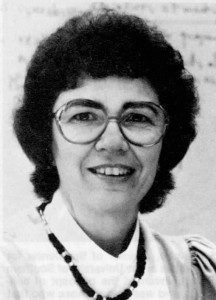
One of the most accomplished scientists I have had the privilege of interviewing was Mary L. Spaeth, a physicist in the field of laser optics.
Spaeth was a pioneer who discovered the world’s first “tunable” laser.
While researching ruby lasers at Hughes Aircraft Corp., Spaeth “came to believe that dyes would make excellent lasers.” Dyes are strongly colored chemicals that can be used to add color to a material, such as hair or cloth.
Mary L. Spaeth: Tunable Laser Inventor is now available as an e-book in the STEM-Inspirations Free Resource Library. Sign up for the password here.
The year was 1966, only six years after the first laser was invented.
How a laser works
The term “laser” stands for Light Amplification for the Stimulated Emission of Radiation.
Here’s how a laser works. First, a flash of light or electrical energy is aimed onto a lasing “medium,” such a crystal rod or a clear container of liquid dye. The light excites the atoms in the medium, causing them to jump up to a higher energy state.
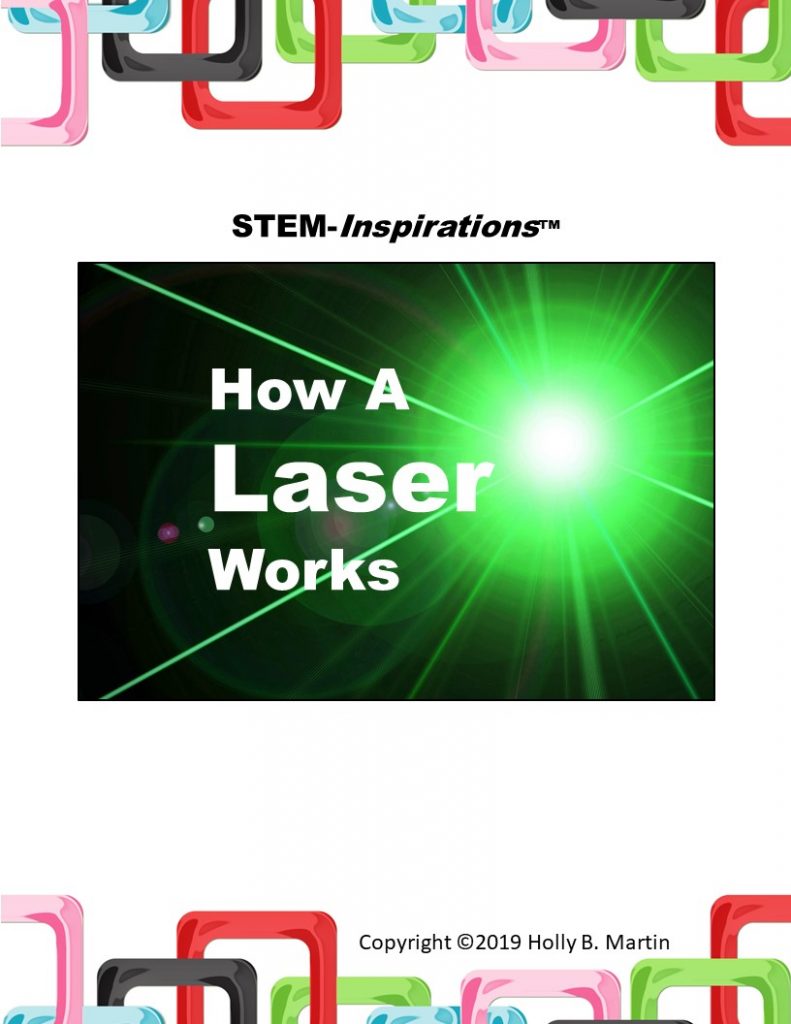
But the excited atoms naturally seek a lower energy state. They do this by releasing photons, the basic particle of light.
The column-shaped laser medium is laid flat, with two mirrors facing each other at opposite ends of the medium. The mirrors cause the photons to reflect back and forth between them.
As the photons move through the medium, they collide with other atoms, exciting them and releasing more photons, all moving in the same direction.
One of the mirrors is specially treated (half-slivered). Eventually, so many photons are moving through the medium they gain enough energy to pass through the half-silvered mirror. The moving photons become a powerful, straight beam of coherent light.
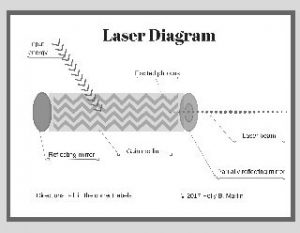
“Coherent” means that every photon inside the beam has the same wavelength. The particles move like a row of waves exactly the same height with all their crests in a perfect line hitting the beach at exactly the same time. It is the coherence of the photons that makes the laser beam very focused, even over long distances.
Race to find more lasers
Coherent light is very different from the scattered light shining out in all directions from a light bulb. Scientists of Spaeth’s day could imagine all sorts of interesting things that laser light could accomplish.
Once the first laser was invented, every scientist wanted to get in on the action. They began trying many different mediums to see which ones would create a stimulated emission of radiation.
Click here to join the STEM-Inspirations mailing list and download the complete Mary L. Spaeth: Tunable Laser Inventor e-book, complete with discussion questions, references, Laser Diagram worksheet and Laser Word Scramble.
Laboratories all over the world were involved in this mad push in laser research, and Spaeth wasn’t the only one to think of using a container of liquid dye for a laser medium.
It turned out that a research group at IBM led by Peter Sorokin also came up with the concept of dye lasers, and IBM’s was the first to be reported. Sorkin ultimately got the credit for inventing the dye laser.
Inventing a “tunable” laser
“We had designed the [dye laser] equipment and were getting ready to test it when we heard about Sorokin’s work,” Spaeth said.
However, she didn’t let that stop her. “Since there was so much difference in the [choice of dye] molecules we proposed to use, the decision was made to proceed,” she said.
That decision was an important one, because Spaeth’s dye laser turned out to be tunable, unlike Sorokin’s.
“Tunable” means that the laser can be tuned to operate in a range of wavelengths, similar to the way that a radio dial can be tuned up or down to catch different stations. Other types of lasers only produce a single wavelength of light.
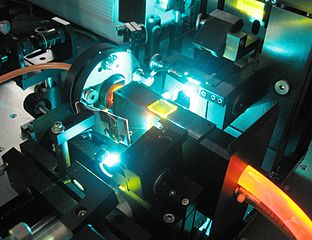
And so Spaeth became the first person to design and operate a tunable laser.
“No one at Hughes believed that it was an actual laser because it was tunable and no tunable lasers had yet been seen,” she said.
Winning with AVLIS
Her success inventing the tunable laser led Spaeth to a new project at the Department of Energy’s Lawrence Livermore National Laboratory (LLNL) in Livermore, California.
In the 1970s, scientists there proposed using Atomic Vapor Laser Isotope Separation (AVLIS) to enrich uranium. Nuclear power plants need enriched uranium as fuel in order to create electricity.
Enriched uranium has been treated so it contains a larger percentage of the uranium-235 (U-235) isotope than is found in nature. Isotopes are molecules with the same number of protons, but a different number of neutrons. For example, U-235 has three fewer neutrons than U-238. They are both isotopes of the element uranium.
Tuning is the key
The key to making laser enrichment work was Spaeth’s tunable laser concept. By fine-tuning its wavelength, the laser beam is able to energize (ionize) only the U-235 molecules, without affecting the U-238 molecules. The ionized molecules become attracted to an electrical collector plate, leaving the non-ionized molecules to pass through untouched.
Tunable lasers and the AVLIS technology were predicted to cost much less, save a lot of energy, and produce less hazardous waste than the two existing enrichment methods.
In 1986, Spaeth became the deputy program leader of AVLIS. She was responsible for managing a year-long process to determine which advanced enrichment technology should be chosen – laser isotope separation with AVLIS, or advanced gas centrifuge technology.
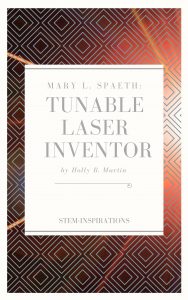
“We were pitted against four major companies in the U.S.,” Spaeth said. “$3.5 billion dollars of U.S. citizens’ money had been invested in the competing technology, but we were the winners.”
Spaeth said, “The judges were convinced that the process we were developing had a bigger chance for doing what the U.S. needs—a progression from something that’s just a gleam in your eye to a business worth more than $100 million a year.”
Back in 1986, Spaeth counted the AVLIS win as her highest achievement. “When I came to the program 12 years ago, nobody would have given two cents for the probability that we would be in the position we’re in today,” she said.
Chief Technology Officer at NIF
In 1992, LLNL demonstrated a complete, commercially viable AVLIS system. The AVLIS technology was then leased to the U.S. Enrichment Corporation (USEC) to begin commercial operation.
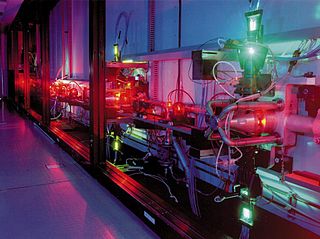
But in 1999, USEC abandoned laser enrichment of uranium. Laser isotope separation technology is still being developed in other countries and may be useful in astronomy, medicine, materials processing and power plant nuclear waste re-use.
By that time, Spaeth had already moved on. In 1991, Livermore Lab chose her to help start up a grand new project—the National Ignition Facility (NIF).
At the NIF, scientists hope to learn whether bombarding a small target of hydrogen fuel with a gigantic laser pulse could create a sustainable nuclear fusion reaction and become a new source of energy in the future.
In addition to engineering large laser systems, Spaeth worked with laser optics, the polished glass lenses and mirrors used to direct a laser beam and keep it stable over long distances.
When high-energy beams pass through the optics, their electro-magnetic energy sometimes damages the pure glass structure. The tiniest fracture, impurity or contamination in the optics will slow down the laser beam, and reduce the power delivered to the target.
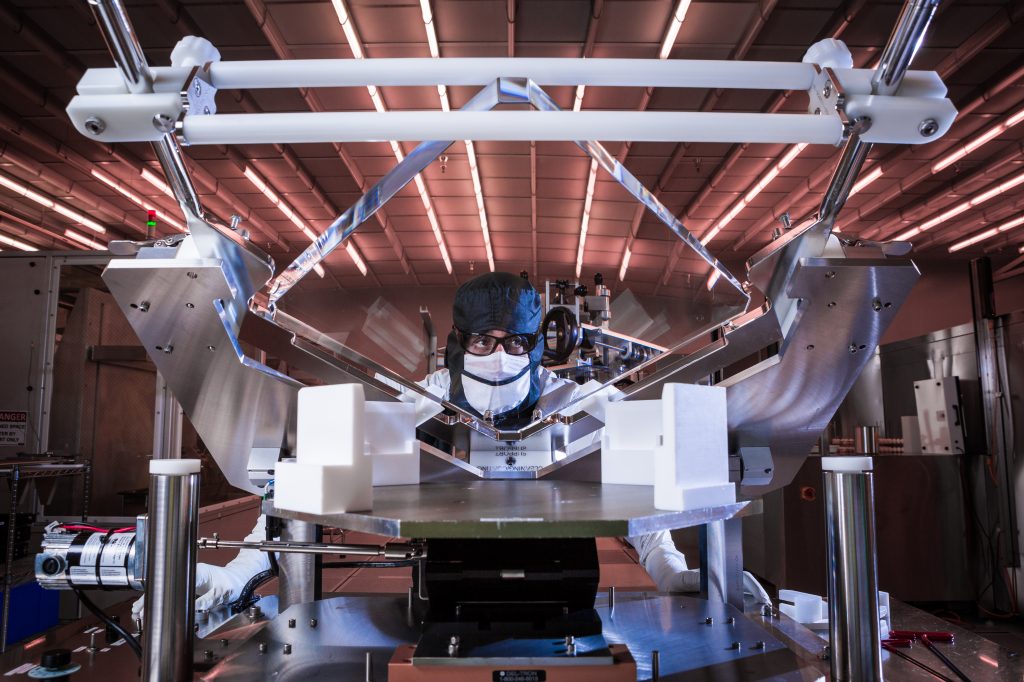
At NIF, Spaeth was known for designing a “Loop Strategy” to repair and recycle damaged optics, rather than throwing them away.
On being female in a “male occupation”
By the time Spaeth retired in 2012, she had become Chief Technology Officer of NIF. She left less than one year before researchers there demonstrated a ground-breaking energy positive fusion reaction. Her contributions, in laser optics and in systems engineering management, were no doubt critical to the mission’s success.
On the subject of being a woman engineer in a traditionally male occupation, Spaeth said back in 1986, “I don’t think of myself as anything other than a person who is trying to accomplish a task.”
“There are always individuals that will give you a hard time,” she said. “But at Livermore, you are judged by whether or not you deliver a product.” And Mary Spaeth’s long and fruitful career as a woman in STEM testifies to the truth of her statement.
Copyright (c) 2017-2019 by Holly B. Martin
Click here to join the STEM-Inspirations mailing list and download the free e-book Mary L. Spaeth: Tunable Laser Inventor.
